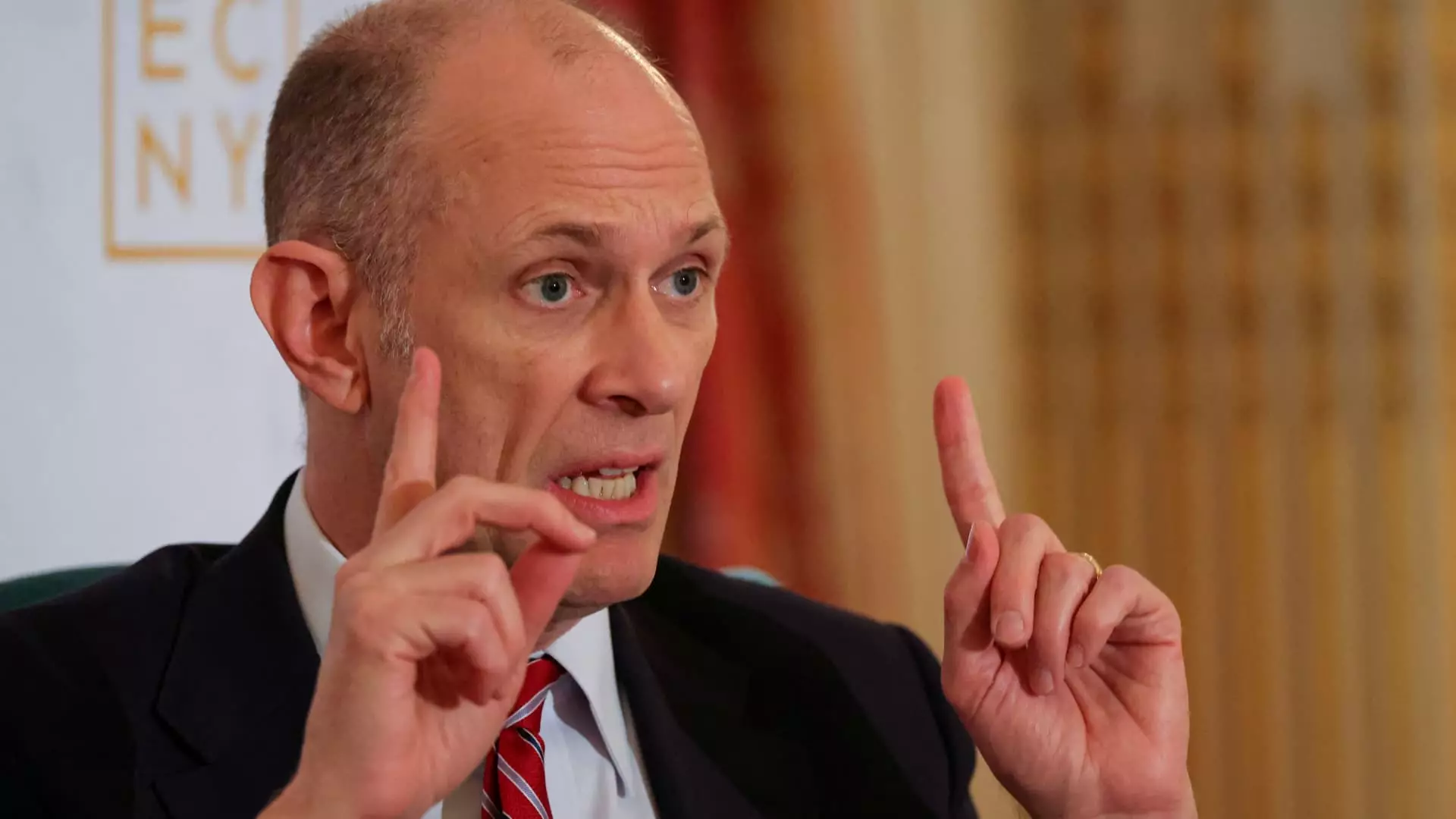Uncertainty dominates the current economic landscape, primarily fueled by the erratic trade policies emanating from the Trump administration. Chicago Federal Reserve President Austan Goolsbee recently articulated concerns over how these threats may potentiate further complications in monetary policy. In a revealing CNBC interview, Goolsbee underscored that the prospect of increased tariffs could hinder any immediate changes to interest rates, while simultaneously complicating ongoing assessments of inflation and employment metrics. This presents a pivotal moment for the Federal Reserve, caught in a balancing act between proactive monetary policy and the unpredictable tides of international trade.
Goolsbee’s analysis signals an acute awareness of how global shifts can reverberate throughout domestic economic spheres. The Fed’s role, while traditionally insulated from day-to-day fiscal matters, has become increasingly intertwined with the ramifications of tariff threats. Goolsbee’s declaration that “everything’s on the table” eloquently summarizes the Fed’s cautious stance; the necessity to keep options open while awaiting clearer signals about how trade dynamics will influence inflation and employment statistics cannot be overstated.
Evaluating the Broader Implications of Tariffs
The gravity of Goolsbee’s comments lies in their reference to the dreaded specter of stagflation — a situation where inflation rises concurrently with stagnant economic growth. A scenario where soaring tariffs lead to increased prices without corresponding wage growth could entrap the economy in a deadlock, creating detrimental conditions for both consumers and businesses alike. The looming fear of inflation, a topic Goolsbee deftly navigated, remains a nagging concern for everyday Americans already burdened by rising costs. Yet, the question remains: how significant will the impacts on pricing actually be?
While some view the implications of a 50% tariff on European goods or the proposed 25% tariff on non-U.S. iPhone production as a minor inconvenience, others fear that this volatility in trade could serve as a catalyst for broader economic instability. The costs of consumer products could escalate rapidly, propagating a chain reaction that could undermine spending power and dampen economic optimism.
Market Reactions and Future Projections
The stock market’s sensitivity to such announcements is telling; a simple political directive can invoke market tremors that underscore the fragility of investor confidence. The anticipation of incurring higher costs on consumer products flickers alarm bells across trading floors, evoking fears of economic stagnation in a climate already susceptible to policy shifts. Goolsbee’s acknowledgment of this volatility—coupled with the reality of rising bond yields—paints a vivid picture of how interdependent monetary policy has become on shifting geopolitical landscapes.
Given that Goolsbee is a current voting member of the Federal Open Market Committee (FOMC), his perspective is crucial in informing decision-making about future interest rate adjustments. He has expressed optimism that economic growth remains achievable — a hope for a trajectory that ultimately aligns with a return to lower interest rates. However, his cautious refrain, suggesting that the Fed should “not tie our hands” in the face of ongoing unpredictability, is a strategic acknowledgment of the importance of maintaining flexibility in policy response.
The Fed’s Dilemma: Agile Yet Guarded
As the FOMC prepares for its next meeting in June, the implications of Trump’s trade strategy loom large over the committee’s deliberations. The Fed previously indicated potential rate cuts, yet the volatility surrounding tariffs complicates the picture. With an established borrowing rate currently at 4.25-4.5%, Goolsbee’s insights imply that expecting lower rates might require tempered enthusiasm. The equities and bond markets are already pricing in potential cuts later in the year, yet the ambiguity surrounding fiscal policy means that each decision will be laden with risk.
In an environment where economic signals are ever-shifting, the Fed’s commitment to navigating these complexities through a careful examination of trade and inflation reactions remains paramount. The success of these deliberations will hinge not only on data but also on an ability to embrace adaptability in an unpredictable economic climate. As leaders like Goolsbee grapple with these intricacies, the focus must remain on underlying economic fundamentals, with an eye toward steering the fiscal vessel through turbulent waters ahead.

